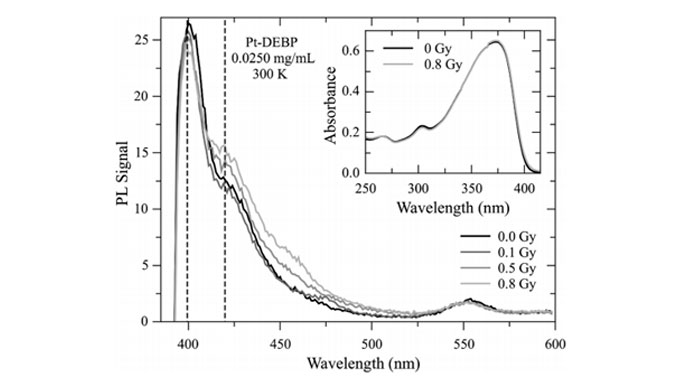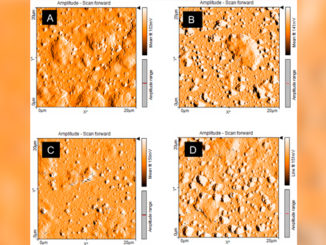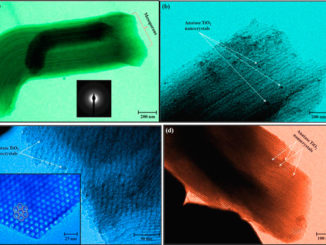
Writers: E. S. Bronze-Uhle; A. Batagin-Neto; D. M. Fernandes; I. Fratoddi; M. V. Russo; and C. F. O. Graeff
Keywords: Dosimetry; Emission spectra; Polymers; Absorption spectra; Organometallic compounds
Abstract: In this work, the effect of gamma radiation on the optical properties of polymetallayne poly[1,1′-bis(ethynyl)-4,4′-biphenyl(bis-tributylphosphine)Pt(II)] (Pt-DEBP) in chloroform solution is studied. The samples were irradiated at room temperature with doses from 0.01 Gy to 1 Gy using a 60Co gamma ray source. A new band at 420 nm is observed in the emission spectra, in superposition to the emission maximum at 398 nm, linearly dependent on dose. We propose to use the ratio of the emission amplitude bands as the dosimetric parameter. This method proved to be robust, accurate, and can be used as a dosimeter in medical applications.
DOI: 10.1063/1.4812186




